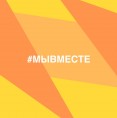- The opening of the Russian Championships Superfinals among men and women
- Photographers from the United States conducted a special photoshoot project in the Museum of Political History of Russia
- Meeting with German historians, social activists and museum colleagues
- «Reflections of the Revolution»
- Around the Winter Palace 1917
- Conference “Revolution in 1917 in Russia: Events and Conceptions, Consequences and Memory”
- “Life or Literature. Varlam Shalamov”
- “Horchposten 1941/ I Hear War”
“Horchposten 1941/ I Hear War”
The interactive Russian-German sound installation, “Horchposten 1941/ I Hear War,” (authors: Yokhen Langner and Andreas von Vestfalen) leads listeners into a space of memory about the Eastern Front in the Second World War, including the besieged Leningrad. The goal of the installation is not only to familiarize Russians and German attendees with the experience of the war generation, but to allow them to change their perspective. The exhibition lets visitors look at the events from the point of view of the former enemy, giving them the ability to leave the constraints of traditional perspectives and to listen to the dialogues of memory.
The sound space installation is divided into several zones: the Soviet and German rear, the Front, territory that found itself under the control of either country, and the siege of Leningrad. Visitors can freely move around the space, picking their individual path. One listens to actors voicing excerpts from diaries and letters, documents of this time, texts from the press, speeches from political organs and war administrations of both countries. A visitor can find out about the General Plan of the Eastern Worker, listen to witnesses of the siege of Leningrad, and listen to the recollections of the witnesses of the disaster experienced by the people of Germany in the spring of 1945. Through these primary sources, this long history obtains the real form of human tragedy.
The modern man finds himself in this space of memory and is able to question this current time and modern Russian-German relations. This exhibits attempts to have a dialogue between two cultures, a conversation about the past on the basis of history from the space of two experiences. History and its interpretation influence our modernity: there, where a common experience is missing, a common language is often also missing. The project, “Horchposten 1941/ I Hear War,” thus provides a space for this common experience and common language.
The installation is embedded in the space of the exhibit, “The Liberation of Europe” (opened in May 2015), creating historical context of the installation. “The Liberation of Europe” shows the events of the Second World War on European territory, starting with the establishment of Hitler’s “New Order” and ending with the Berlin operation and the capture of the Reichstag.
Along with the sound installation in May of this year, there will be a broadcast of a radio show with the same name on the radio station, “Deutschlandfunk.” Also participating in the creation of this project is “Ekho Moskvy” and “Westdeutscher Rundfunk.” The Ministry of Foreign Affairs of the Federal Republic of Germany, the foundation “Memory, Responsibility, and the Future” (EVZ), Die Zeit-Stiftung and the Foundation of Friedrich Ebert in the Russian Federation also sponsored this project.
















